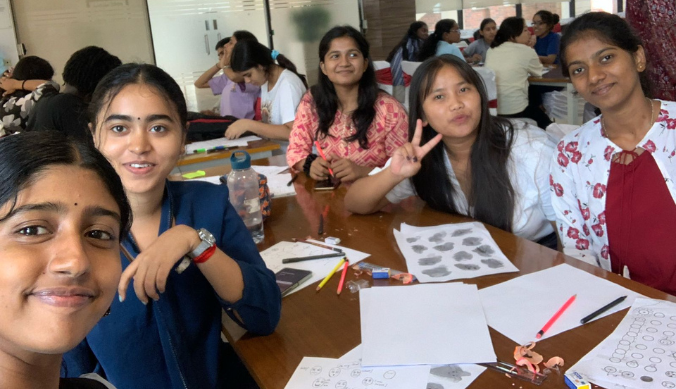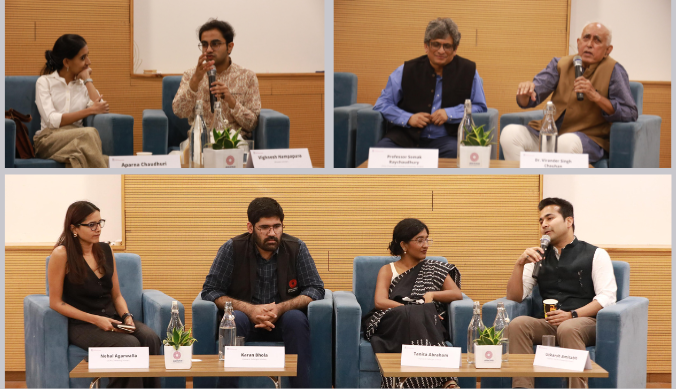The Future of Financial Inclusion: Fintech’s Role in Empowering Rural India
Arshia Kohli shares her experience and insights attending the Bharat Inclusion Sprint hosted by IIMA Ventures
It was an incredible privilege to participate in the Bharat Inclusion Sprint hosted by IIMA Ventures, where I was exposed to thought-provoking insights from experts like Kapish Kaushal, Vice President of ONDC, and Vinay Shah from ULI RBHI. The discussions during the sprint shed light on how digitization is reshaping financial inclusion, particularly through innovative fintech solutions. These advancements are not just transforming rural economies but are also making financial systems more accessible and efficient.
One of the most compelling takeaways from the event was how digitization is revolutionizing the Kisan Credit Card (KCC) process for farmers. The traditional KCC system, while beneficial, often involved cumbersome paperwork, long processing times, and accessibility challenges for rural farmers. By integrating fintech solutions, the process has been significantly streamlined. Farmers can now access credit with ease, and the efficiency of transactions between lenders and service providers has dramatically improved. This transformation is pivotal in empowering farmers, reducing dependency on informal lending sources, and ensuring timely financial assistance for agricultural activities.
The integration of fintech into government actions has opened new avenues for microfinance, enabling its accessibility even in remote areas. For instance, mobile payment platforms, digital wallets, and micro-lending apps are bridging the gap between rural populations and formal financial systems. By leveraging technology, we are not only making financial services more efficient but also driving inclusive growth at the grassroots level. These innovations ensure that even the most marginalized sections of society have access to credit, savings, and insurance products, which are critical for economic resilience.
Another vital aspect discussed during the sprint was the significance of viewing financial inclusion through a gender lens. Women, especially in rural areas, often face unique challenges when it comes to accessing financial resources. Societal norms, lack of financial literacy, and limited decision-making power have traditionally excluded women from the financial ecosystem. However, it is increasingly evident that empowering women financially is not just a matter of equity but also a catalyst for sustainable economic growth.

Research has consistently shown that when women have access to financial resources, they invest more in their families and communities, leading to improved health, education, and economic outcomes. For example, microfinance programs that target women have demonstrated higher repayment rates and more significant impacts on poverty alleviation. This underscores the importance of designing financial products and services that cater specifically to the needs of women.
This made me think about my own initiative Girl Up Ujjiwan, dedicated to empowering young girls and women through financial education and opportunities. We have seen firsthand the transformative impact of financial literacy. By equipping women with the knowledge and tools to manage their finances, we are not only helping them escape the cycle of debt but also fostering a sense of independence and confidence. This focus on gender inclusion aligns seamlessly with the discussions at the Bharat Inclusion Sprint, emphasizing the need for targeted interventions to bridge the economic divide.
As we look ahead, the focus must remain on making financial systems more inclusive and equitable. This involves not only expanding access to financial services but also addressing the systemic barriers that prevent marginalized groups from fully participating in the financial ecosystem. Gender inclusion, in particular, should be a central pillar of these efforts. By empowering women with financial resources and education, we can unlock their potential to drive economic growth and foster a more equitable society.
The discussions at the Bharat Inclusion Sprint highlighted how technology and innovation are shaping the future of rural financial inclusion. By simplifying processes like KCC for farmers, integrating fintech solutions into government actions, and addressing the unique challenges faced by women, we are paving the way for a brighter, more inclusive future.
Writer: Arshia Kohli – 3rd Year UG25
Study at Ashoka













